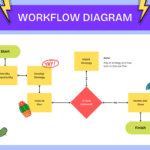Now Reading: Incorporate NLP Chatbots into Your Training Programs
-
01
Incorporate NLP Chatbots into Your Training Programs
Incorporate NLP Chatbots into Your Training Programs

Natural Language Processing (NLP) is a significant branch of artificial intelligence that focuses on the interaction between computers and humans through natural language. By integrating machine learning algorithms and linguistic rules, NLP enables systems to understand, interpret, and generate human language in a meaningful manner. This technology plays a pivotal role in the functionality of chatbots, making them adept at processing user inputs and providing relevant responses based on context.
NLP chatbots are designed to enhance training programs by facilitating communication between trainers and learners in an interactive and efficient manner. These chatbots can accommodate a wide variety of training scenarios, ranging from providing quick answers to frequently asked questions to engaging learners in personalized training sessions. By utilizing NLP, chatbots can understand the nuances of human language, allowing them to cater to individual learner needs more effectively than traditional methods.
The benefits of integrating NLP chatbots into training programs are multifaceted. For trainers, these chatbots provide scalable solutions to address learner inquiries without the need for constant human intervention, which can be resource-intensive. They can set up a continuous feedback loop, assisting trainers in identifying common areas of difficulty among learners. For learners, NLP chatbots foster an engaging learning environment by providing instant assistance, thus allowing them to learn at their own pace. These chatbots can also deliver customized content based on learner input, enhancing the overall educational experience.
There are various NLP chatbot platforms widely used in educational settings, including IBM Watson, Google Dialogflow, and Microsoft Bot Framework. These platforms offer robust tools for developing conversational agents tailored to specific training needs. By understanding the technology behind NLP chatbots and their applications, educational institutions can leverage these tools to maximize learning outcomes and improve the overall effectiveness of their training programs.
Benefits of Using NLP Chatbots in Training
In recent years, the integration of Natural Language Processing (NLP) chatbots into training programs has emerged as a significant development, bringing forth numerous benefits for both learners and organizations. One of the primary advantages is the ability to provide personalized learning experiences. NLP chatbots can analyze individual learner behaviors, preferences, and progress, enabling them to tailor content according to the specific needs of each student. This customization enhances engagement and optimizes the learning process, making it more efficient.
Another vital benefit of incorporating NLP chatbots is the 24/7 accessibility they offer. Unlike traditional training methods, which may be confined to specific hours or locations, chatbots can assist learners at any time and from anywhere. This round-the-clock support facilitates continuous learning, allowing learners to access resources and receive assistance whenever they require it. Consequently, learners can engage with the material at their optimal pace, leading to better retention of information.
Additionally, NLP chatbots provide immediate feedback, a crucial element for effective training. Prompt responses to learner queries can accelerate understanding and help rectify misconceptions before they become ingrained. For instance, a study conducted by TechValidate reported that organizations utilizing chatbots in their training programs saw a 30% increase in learner engagement and a 25% improvement in knowledge retention. This real-time interaction not only boosts morale but also fosters a more interactive learning environment.
Furthermore, the automation of repetitive tasks is another area where NLP chatbots excel. By handling administrative tasks such as tracking progress, scheduling, and grading assessments, these chatbots free up trainers’ time. This allows educators to devote more attention to strategic aspects of training and support learners directly. The incorporation of NLP chatbots into training frameworks demonstrates profound potential to enhance overall learner outcomes and engagement significantly.
Identifying Your Training Needs
Before incorporating NLP chatbots into training programs, it is essential to first assess and identify the specific training needs of your organization. This systematic approach will ensure that the chatbot functionalities align with your goals and enhance the learning experience for participants. Here are the steps to evaluate your training requirements effectively.
The first step is to evaluate the curriculum goals. Clearly defined objectives will guide the integration process, ensuring that the chatbot complements the learning materials. Consider what skills or knowledge gaps exist within your organization, and outline the desired outcomes. Pay attention to whether the training is aimed at improving employee performance, compliance, or fostering professional development.
Next, understanding your learner demographics is crucial. Consider the age, experience, and learning preferences of your participants. A thorough analysis of these factors will help in tailoring the NLP chatbot to meet diverse learning styles. For instance, if your audience is predominantly tech-savvy Millennials, the chatbot can employ more interactive features, such as gamification, compared to a training program designed for older generations, which might prefer a more traditional approach.
It is also important to identify existing challenges within current training programs. Conduct surveys or interviews to gather feedback from trainees regarding their experiences, and pinpoint any difficulties they encounter. This insight will enable you to identify gaps in the existing training methodologies and how an NLP chatbot can help overcome these hurdles.
Finally, once the training needs have been clearly established, align the functionalities of the chosen NLP chatbot with these requirements. Consider aspects such as the types of questions the chatbot can handle, the ability to provide instant feedback, and how it can personalize the learning path for each individual. This alignment will foster a more effective training experience and ensure the successful adoption of NLP chatbots in your training programs.
Designing NLP Chatbots for Training Programs
Designing natural language processing (NLP) chatbots for training programs involves a systematic approach to ensure that they effectively meet the educational objectives. The first step in this design process is to define the chatbot’s purpose. This includes understanding the specific training needs it will address, such as providing information, facilitating learning, or offering assessments. Clear objectives help in aligning the chatbot’s functionalities with the educational goals of the program.
Next, determining the conversation flow is crucial for enabling seamless interactions between the chatbot and users. Mapping out potential user scenarios can aid designers in creating logical pathways for conversation. This involves outlining various routes the dialogue may take, allowing the chatbot to handle inquiries or direct users toward pertinent resources effectively. By anticipating user questions or concerns, designers can enhance user experience and ensure the chatbot remains relevant throughout the training process.
Another significant aspect is the development of interactive content. NLP chatbots should not only provide text-based responses but also incorporate multimedia elements like videos, quizzes, or simulations. These dynamic content delivery methods can significantly boost learner engagement while catering to different learning styles. Furthermore, employing gamification techniques can make learning more enjoyable and help reinforce knowledge retention.
Finally, a user-friendly interface is paramount. The design should prioritize accessibility, allowing users to navigate the chatbot effortlessly. This includes using intuitive commands, clear language, and responsive design that caters to various devices. Best practices in content creation play a vital role; the language should be simple yet informative, while content updates should be regular to keep learners engaged and informed about new developments. With these design elements in place, NLP chatbots can significantly enhance training programs, making them more interactive and effective.
Integrating NLP Chatbots into Learning Management Systems
The integration of Natural Language Processing (NLP) chatbots into Learning Management Systems (LMS) represents a transformative approach to enhancing educational experiences. Achieving a seamless integration involves understanding the technical aspects and ensuring compatibility between the chatbot and the LMS. There are several methods for integrating NLP chatbots, including API integrations, direct plugin installations, and leveraging middleware for connectivity. The choice of integration method largely depends on the specific LMS architecture and the capabilities of the chatbot in use.
When considering compatibility, it is crucial to assess the technological environment of both the LMS and the NLP chatbot. Compatibility considerations include evaluating the programming languages used, data formats supported, and functionality such as single sign-on (SSO) capabilities. Many modern LMS platforms provide extensive customization options that allow for easy adaptation of chatbots, making them more efficient learning tools. It is advisable to consult the documentation or support teams for guidance on integration capabilities.
Furthermore, when selecting an NLP chatbot for integration, several essential features should be prioritized. Firstly, the chatbot should demonstrate effective comprehension and generation of educational content that mirrors the information presented in the LMS. Additionally, it should provide analytics capabilities that highlight user engagement and learning outcomes, enabling data-driven decisions in training programs. Lastly, user experience plays a pivotal role; the NLP chatbot should have an intuitive interface and be able to handle a wide range of student inquiries without appearing overly mechanical.
Incorporating these considerations not only facilitates a more effective learning environment but also enhances the overall training programs. By carefully selecting an appropriate NLP chatbot and ensuring a smooth integration into existing LMS frameworks, educators can significantly benefit from the advantages that automated, conversational agents bring to the learning process.
Testing and Iterating Your Chatbot
Once an NLP chatbot has been deployed within a training program, the pivotal next step is to initiate a thorough testing and iteration phase. This process is integral to ensuring that the chatbot meets user needs and facilitates effective learning. The first stage in this cycle involves user testing, where real learners interact with the chatbot. This stage allows for the observation of user behavior, identification of potential roadblocks, and understanding how the chatbot fits into the broader learning experience.
Collecting feedback is a critical aspect of this phase. Utilize structured surveys, informal conversations, or focus groups post-interaction with the chatbot to gather insights from users. Questions should probe their satisfaction with the chatbot’s responses, the perceived relevance of the information provided, and the overall user experience. Such feedback is invaluable, as it provides direct user perspectives, which can guide modifications and enhancements to the chatbot’s functionality.
In addition to qualitative feedback, analyzing performance metrics is essential. Track data points such as user engagement rates, completion rates of tasks, and the frequency of fallback responses, which indicate when the chatbot fails to understand user queries. Implementing analytics tools can shed light on these metrics, helping identify trends and areas for improvement.
Continuous improvement remains at the forefront of effective NLP chatbot integration. By iteratively incorporating user feedback and performance data, developers can refine the chatbot’s conversational abilities and responsiveness. Regular updates not only enhance learner interaction but also significantly boost overall satisfaction, creating a more engaging and productive training environment.
Challenges in Implementing NLP Chatbots
In the process of incorporating NLP chatbots into training programs, organizations often encounter a variety of challenges that can hinder successful integration. One significant challenge is the resistance to technology among employees. Many individuals may feel apprehensive about adopting new tools, particularly if they are accustomed to traditional training methods. To mitigate this resistance, organizations should prioritize user education, highlighting the benefits of NLP chatbots in enhancing learning efficiency and personalization.
Another critical issue is ensuring data privacy. With the increasing reliance on technology, safeguarding user data has become paramount. Organizations must comply with data protection regulations while also fostering trust among users. This requires implementing robust security protocols, regularly updating privacy policies, and transparently communicating how data will be used. By prioritizing data privacy, organizations can effectively alleviate employee concerns and promote acceptance of NLP chatbots.
Furthermore, designing contextually relevant interactions is crucial for the effectiveness of NLP chatbots in training programs. Chatbots need to be tailored to the specific needs and learning styles of users, which requires a deep understanding of the training content and desired outcomes. Organizations should invest time in developing comprehensive training materials that accurately reflect the context in which chatbots will operate. Continuous feedback from users can also facilitate improvements in chat interaction design, ensuring that chatbots remain relevant and impactful.
In addition to these challenges, organizations should also consider the technical aspects of deploying NLP chatbots. Collaborating with knowledgeable developers and conducting thorough testing can help identify potential pitfalls early in the process. By addressing these challenges head-on, organizations can maximize the effectiveness of NLP chatbots in their training initiatives, ultimately leading to improved learning experiences.
Real-World Examples of NLP Chatbots in Training
The utilization of Natural Language Processing (NLP) chatbots in training programs has significantly increased across various industries, demonstrating the flexibility and effectiveness of this technology. For instance, in the healthcare sector, numerous hospitals have implemented NLP chatbots to assist in staff training. These chatbots provide immediate access to vital information such as patient care protocols and medical guidelines, thereby enhancing the learning experience. As new protocols emerge, the chatbots can update their responses in real-time, ensuring that healthcare professionals receive the most current information available.
In the financial services industry, major firms have adopted NLP chatbots to facilitate training for compliance and regulations. These chatbots engage employees in interactive scenarios that simulate real-life situations, allowing trainees to apply their knowledge in a safe environment. Companies like JPMorgan Chase utilize such technologies to ensure that staff are well-versed in the latest regulatory requirements while also reducing overall training time. Through tailored interactions, employees can refine their decision-making skills and receive personalized feedback, promoting a more efficient learning process.
Moreover, the retail sector has seen innovative uses of NLP chatbots aimed at enhancing customer service training. Retail giants such as Walmart have deployed chatbots that simulate customer interactions, enabling employees to practice their responses to various consumer inquiries. This practical approach helps employees build confidence and improve their communication skills in a high-pressure environment. The chatbots also collect data on employee performance and areas for improvement, allowing management to provide targeted coaching where necessary.
These examples illustrate how NLP chatbots can transform training methodologies across diverse sectors. Organizations looking to modernize their training processes can draw inspiration from these real-world implementations, understanding that the adaptability and efficiency of NLP technology can lead to better-trained employees and optimized operational performance.
Future Trends in NLP Chatbots and Education
The integration of Natural Language Processing (NLP) chatbots into educational environments presents various potential advancements and trends that could reshape the training landscape. As technology evolves, NLP chatbots are expected to become more sophisticated, resulting in enhanced educational tools that can provide personalized learning experiences. One significant trend is the increasing use of artificial intelligence in developing more intuitive NLP systems capable of understanding and responding to student inquiries in a more contextually relevant manner.
Moreover, the rise of data analytics and machine learning is revolutionizing how educators assess learner engagement and comprehension. By analyzing user interactions with NLP chatbots, educators can gain valuable insights into student learning patterns. This data-driven approach allows for the fine-tuning of training methodologies, helping educators to adapt their curricula to better meet the diverse needs of their learners. Consequently, we can anticipate a shift toward more adaptive and customized learning experiences driven by the specific demands of individual learners.
Another important aspect to consider is the growing expectation of instant support and information access among learners, largely influenced by their experiences in the digital world. As students become accustomed to immediate responses, the role of NLP chatbots in education will likely expand, transitioning from simple question-answering tools to comprehensive virtual assistants that can guide students through complex educational journeys. This shift will require educators to familiarize themselves with NLP technologies and to integrate these innovations into their training programs proactively.
As these trends continue to develop, staying ahead of the curve will be critical for educational institutions. Embracing emerging NLP chatbot technologies not only enhances the learning experience but also equips students with the necessary tools to thrive in a rapidly changing world. The future holds immense potential for the synergistic relationship between NLP chatbots and education, ultimately leading to a more engaging and effective training process.
Incorporating Natural Language Processing (NLP) chatbots into training programs offers a transformative approach to enhancing learner engagement, personalization, and efficiency. Throughout this blog post, we have explored the significant advantages of utilizing NLP chatbots as an innovative tool for training and development. By automating responses, providing real-time support, and facilitating interactive learning experiences, these chatbots can significantly improve the learning process.
Moreover, implementing NLP chatbots can lead to cost savings and a reduction in the workload for educators and trainers. By freeing up time spent on repetitive tasks, educators can focus on delivering high-quality instruction and personalized coaching, thereby fostering a more supportive and engaging learning environment. Furthermore, natural language processing technology enables chatbots to understand and respond to learners’ queries in a human-like manner, providing assistance that feels more intuitive and effective.
While the potential benefits are substantial, careful planning and integration are essential for success. It is crucial for organizations to assess their training needs, identify suitable platforms or tools, and ensure the technological infrastructure is in place to support the implementation of NLP chatbots. Engaging stakeholders and providing training for staff can also facilitate a smoother transition and enhance overall effectiveness.
As you consider the integration of NLP chatbots into your training initiatives, we encourage you to take actionable next steps. Explore affiliate links provided throughout this article for valuable resources, tools, and platforms that can assist you in leveraging NLP chatbots effectively. By doing so, you will not only improve the quality of your training programs but also stay at the forefront of educational innovation. Embrace the future of training with NLP chatbots and unlock the full potential of your learning experience.
























